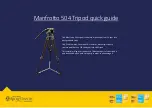
4
Mode of functioning of the rescue reserve
In emergency situations the release handle is pulled up with a powerful jolt. In this manner the outer
container is opened and the rescue reserve released. Subsequently the reserve packet (still packed
in the inner container) must be thrown boldly into free air space. The release handle is thrown away
together with the reserve !
The inner container is constructed in such a way that the suspension lines and the reserve canopy
are first released after being thrown.
A premature and undesired opening is thus prevented. This minimises the risk of the reserve beco-
ming tangled up with the paraglider / pilot / or any other reason for the emergency situation (eg.
collision with other pilots etc). In addition, the maximum speed of the inner container necessary for
a fast opening of the rescue reserve is first reached after it has left the hand of the pilot.
As a general rule: the faster the reserve is thrown, the quicker it will stretch and open.
After being thrown, the aid chute on the inner container opens first, and immediately afterwards the
inner container itself. The powerful throw and/or the flow of air stretches the suspension lines and
open the canopy.
When the reserve has completely opened, then the remaining height above ground must be ascer-
tained. If sufficient height allows, an attempt should be made to make the paraglider inoperable in
order to avoid a V – attitude from the reserve and the paraglider.
By insufficient height, the pilot should keep his eyes on the ground and prepare to touch down.
Care & maintenance
The CHARLY Expert 18 rescue reserve has been conceived for high loading and extreme opera-
tional demands. Accordingly, only especially durable materials were chosen, that have proven their
worth over many years. Since the service life is dependant to a great extent upon the care
of the owner however, we recommend that the reserve be regularly examined for wear and tear, and
where necessary, damaged components should be immediately repaired directly by CHARLY or by
a CHARLY authorised service centre.
Special attention should be paid to the following points:
•
The reserve should not be unnecessarily exposed to the sun (ultraviolet rays).
•
A damp or wet reserve should be completely unpacked & dried at room temperature or outside in
the shade.
•
Do not subject the packed reserve to large changes in temperature. Make sure that sufficient air
circulation is present to avoid condensation.
•
If the reserve has come into contact with salt water then rinse thoroughly with fresh water.
•
Only clean the reserve with fresh water, at the most with neutral soap. Under no circumstances
should solvent be used.
•
Warning:
Chemicals, cleaning agents, insects, mildew etc can reduce the strength of the con-
struction parts just the same as mechanical influences can.
Storage
Oils, fats, acids and paints must not be stored in the immediate vicinity of the reserve. Storage
should be in a well ventilated & dry room. Rescue reserves that are not to be used for longer periods
of time should be stored unpacked.































